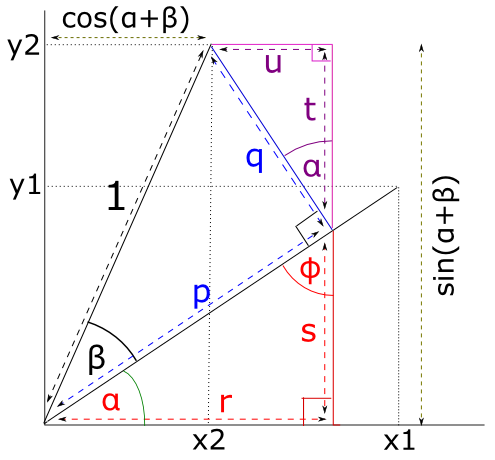\(\newcommand{L}[1]{\| #1 \|}\newcommand{VL}[1]{\L{ \vec{#1} }}\newcommand{R}[1]{\operatorname{Re}\,(#1)}\newcommand{I}[1]{\operatorname{Im}\, (#1)}\)
The angle sum rule¶
The angle sum rule is:
Proof¶
Let’s say we have a vector \((x_1, y_1)\) resulting from the anticlockwise rotation of a length 1 vector \((1, 0)\) by \(\alpha\) degrees around the origin.
We rotate this vector another \(\beta\) degrees anticlockwise around the origin to give length 1 vector \((x_2, y_2)\).

We can see from the picture that:
We are going to use some basic trigonometry to get the lengths of \(r, u, t, s\).
Because the angles in a triangle sum to 180 degrees, \(\phi\) on the picture is \(90 - \alpha\) and therefore the angle between lines \(q, t\) is also \(\alpha\).
Remembering the definitions of \(\cos\) and \(\sin\):
Thus:
So: